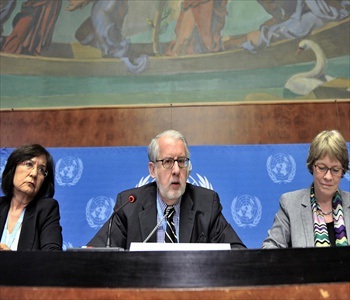Number of ‘homeless’ Chin refugees rises in Malaysia

02 March 2013: Leaders of Chin communities in Malaysia said more than 40 Chin refugees are estimated to have ended up homeless on the streets in Kuala Lumpur.
The number of ‘homeless’ refugees, mostly males aged between 17 and 35, staying in various places across the Malaysian capital is believed to be on the rise compared to previous years.
Community leaders said they had seen an increasing number of new faces during their recent visits to Kotaraya, Bukit Bintang and Pudu areas of Kuala Lumpur.
Chin pastor John Ceu Mang, who visited them, told Chinland Guardian: “Every time I go there, there are about ten or more. I was told that there are females too but I haven’t met them.”
Females can not be seen like males who would walk on the streets asking for money from the passers-by, according to the Chin pastor, adding: “I don’t know the reason but they [females] are not around to meet.”
Recently, a group of volunteers from Chin refugee communities visited Kotaraya, meeting with 11 homeless Chins involving 2 from Hakha, 7 from Tedim, and 2 from Falam.
“We get a list of their names, talk to them properly and give them 5 Ringgits each for food. We plan to visit them at least once a week,” Salai Kung told Chinland Guardian.
Pu Lal Siam Mawi said most of the homeless Chins they met were new people, apart from the one from Hakha, who has been around Kotaraya for about ten years.
Who they are
The majority of the ‘homeless’ Chin refugees in Malaysia are of Hakha, Falam, Mizo and Tedim tribal groups from Burma.
Sources from Chin refugee communities confirmed that they are victims of various problems including depression, alcoholism, drug addiction and mental illnesses as well as domestic issues within the families.
“Some ran away from brutalities at work while others got so depressed from unemployment or being unable to get recognised as refugee by the UNHCR for so long,” said one of the Chin community leaders.
Several refugees started losing hope due to a range of difficulties and barriers during their stay in Malaysia. “Some got separated from their families as they were arrested and detained somewhere else for months,” added the leader.
Two years ago, dozens of Chin refugee children aged between 8 and 15 were reported getting involved in drug dealing in Malaysia, mostly ending up with their friends on the streets.
How they survive
Most of the homeless refugees of Chin ethnicity from Burma manage to survive through foods and services given by local churches and charities although a few have lost their lives on the streets.
Those sheltering in the area of Kotaraya can get ‘free food’ provided by a Roman Catholic church at 12noon from Monday to Friday.
The RC church also has water facilities in its compound where they can clean themselves and do the washing.
There is another place believed to be run by a Chinese charity group offering foods free of charge at night around 10pm four times a week, according to the homeless.
“We don’t get hungry too much as foods are available at these places,” one of the homeless Chins told community leaders.
Tzu Chi Clinic in the area of Pudu is open to refugees for free medical services. “If one of us is sick, at least another person will accompany him or her to go to the clinic,” added the homeless refugee.
Salai Kung, who also met the homeless, told Chinland Guardian that most of them would sleep in the roadside grounds, under the trees, and around the supermarkets when it rains.
Assistance service
In an attempt to combat the homeless situation in Malaysia, the Chin Emergency Relief Group (CERG) was formed early last year.
The community-based organization provided ‘rehabilitation’ services in a rented apartment to over 15 Chin refugees.
“For them, we had an accommodation and food as well as verbal encouragement from the Christian pastors. We managed to rescue about six persons who behave well and work properly until now,” said Lal Siam Mawi, Director-in-Chief of CERG.
Some of the ‘rescued’ refugees confessed that the services and assistance provided by the community were very helpful and that they would want their friends on the streets were reached, too.
Unfortunately, CERG had to stop functioning after six months as the neighbourhood reported to Malaysian authorities due to the Christian worship and prayer services held in the rented apartment, according to the organization.
Lal Siam Mawi said a new place would be rented within the year of 2013 where the assistance activity could be continued with aims of bringing back lives of several ‘homeless’ Chin refugees in Malaysia.
Hope for the homeless
Despite possession of no legal documents or status, the homeless Chin refugees said the Malaysian police or relevant authorities didn’t take any action against them.
One of the Chin community leaders said: “If they are not rescued, they have no hope and choice but to keep on living on the streets.”
“It is important that we, the Chin community worldwide, take this issue into serious consideration so that these people can get back into a normal life.”
As of today, the Chin community leaders said no local nor international NGOs including the UNHCR have made any attempts to reach out to the homeless.
Until recently, Chin refugees came to Malaysia and India in search of refuge and safety after having fled various forms of repression and persecution committed against them by Burma’s military soldiers in Chin State.
There are still over an estimated 45,000 Chin refugees and asylum seekers stranded in Malaysia, according to sources.
Van Biak Thang
[email protected]






